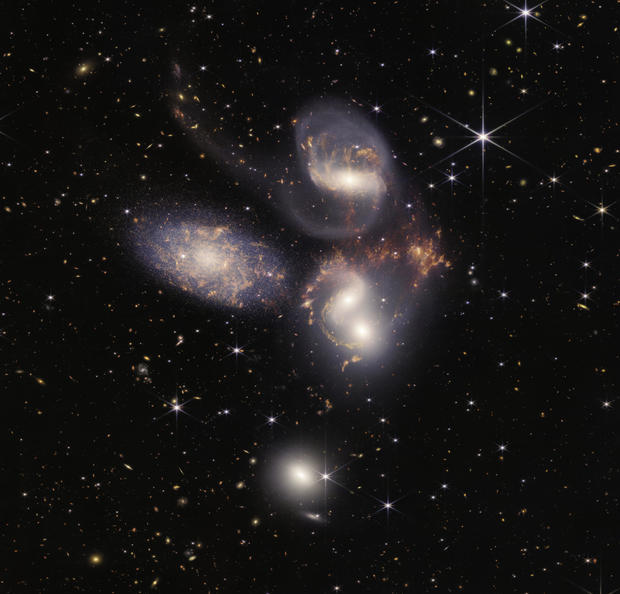Photos from James Webb Space Telescope show never seen before galaxies
BOSTON -- It was a historic and exciting moment that truly was out of this world as NASA revealed the first full-color images from the James Webb Space Telescope on Tuesday.
The world's largest and most powerful space telescope was launched on December 25th, 2021. Now, months later, the world got a front-row seat to the Cosmos as five of the deepest and sharpest infrared images of the universe ever taken were revealed.
"Now, we're ready to see NASA's first image of a star dying," exclaimed Webb Project Scientist Alex Lockwood.
An image of the death of a star took the scientists' breath away during the live event Tuesday morning. The image displayed an array of colors, physics, and structure that eyes have never seen before.
The image known as "Deep Field' was the first to be revealed. It displayed lots of stars, developing like popcorn and never before seen galaxies.
The second image was from an exoplanet a thousand light-years away that is the size of Jupiter and extremely hot, but for the first time scientists could see the atmospheric composition which detected water vapor, clouds, and haze.
The next image revealed is called 'Stephan's Quintet', five galaxies in one picture containing a million to hundreds of billions of stars. One of the galaxies is closer to Earth, but four are about 300 million light-years away doing a cosmic dance with two of them in the process of merging.
The last stunning reveal was the birth of a star. A sea of new stars and cosmic cliffs as ultraviolet light and stellar wind-shaped walls of dust and gas and to one scientist show how connected humans are to the universe.
"Every dot of light is a star, not unlike our sun and many likely have planets. It just reminds me that our sun and our planets and ultimately us, are formed out of the same kind of stuff, that we see here," stated Webb Deputy Project Scientist Amber Staughn.
The $10 billion Webb telescope is stationed about one million miles from Earth and will be like a time machine studying every phase of the 13.5 billion years of cosmic history, helping scientists better understand the universe and help answer some of the biggest questions about Outerspace faster than ever before.
"We took this image before breakfast. The amazing thing about the Webb is the speed at which we can churn out discoveries," says astrophysicist Jane Rigby.
Previous images from other telescopes would take weeks to process. With four major science instruments, the Webb is expected to detect the heat of an insect as far away as the moon. This was clearly no simple task to complete, as this day has been over 20 years in the making with the input of hundreds of scientists and thousands of engineers, making new scientific discoveries along the way.





